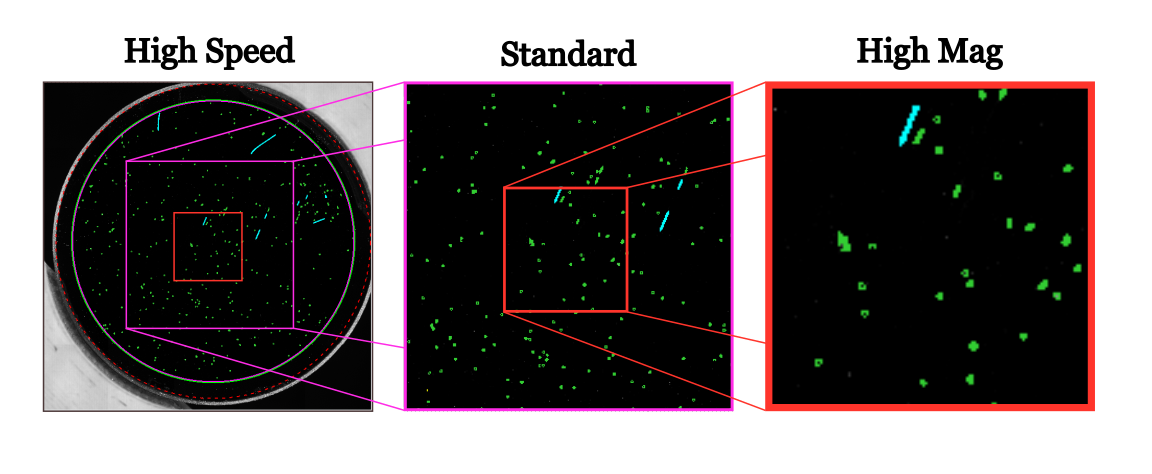
The OptiLux SD is a surface quality inspection system that can automatically find, categorise and grade surface imperfections on optical surfaces. In this blog we will discuss the magnification of the system, in particular why RedLux has chosen to offer each magnification, and which applications may be able to make use of them.
RedLux worked closely with industry leaders to develop the OptiLux SD and that experience, as well as the rules spelled out in the MIL-PRF-13030B and ISO-10110-7 specifications, led to the conclusion that using a 5x5 mm field of view for the standard system would be ideal. This provided a near perfect trade-off when it came to speed, as well as precision, with a 5 µm resolving power and 2.5 µm pixel size. This means that with the "standard" system configuration, average sized optics can be inspected quickly, and defects that would usually be picked up by an inspector can easily be identified and analysed with the dedicated Optilux SD Inspect software package.
Since developing the system, there have been a number of use cases that the standard magnification just isn't ideal for. Some of these have been optics that are very large, meaning the time for inspection may be too long. At other times, manufacturers have been concerned with classifying defects or details that are smaller or more faint than those found on typical optics and therefore require significantly higher resolving power to effectively inspect the parts.
In order to meet these customer's demands, RedLux has developed two additional optical configurations: high magnification and high speed.
The high magnification configuration offers greatly improved optical resolving power at 2 µm, as well as 1 µm pixel size. This allows high-end optical components to be inspected for even the slightest defects.
Additionally, as it is often the case that this increased magnification is only required for a small range of components, and the standard system would work for the rest of a manufacturer's catalogue, RedLux has developed the option to allow for the 5x5 mm field of view and 2x2 mm field of view configurations to be swappable on the same system. The bespoke software package bundled with the system makes all necessary adjustments, making the change simple for an operator. This gives the inspection team considerable flexibility to determine how each component is evaluated.
The high speed version on the other hand, allows for inspection of larger optics in considerably less time, as it has a field of view of 10x10 mm. The speed increase this offers can be seen in the seen below.
The table outlines the strengths of each system, providing a good idea of how the system performs and so how it might be able to best fit a given use case. Please note that the scan time can depend on more factors than just the magnification. If you would like to know more please feel free to get in touch.

The OptiLux SD already offers a high degree of flexibility when it comes to inspecting optics, and the different magnification configuations allow for versatile and efficient surface quality inspection for any needs the industry might have. The standard option is often the ideal balance between speed and precision, but if more is needed then the other two configurations ensure your needs can be met.
OptiLux SD Brochure

We’re helping organisations all over the world reap the benefits of world-leading metrology. Speak to our experts.